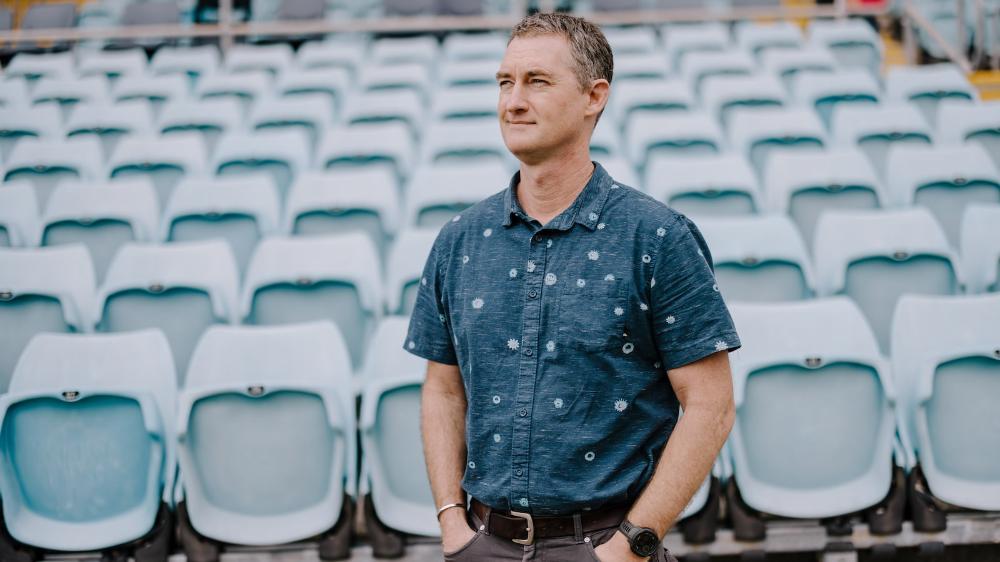October 15, 2024
Can omega-3s mitigate the impact of repetitive head trauma in sports?
New research into American football reveals that omega-3s could provide nutritional armour for both elite and community level athletes
Repetitive head trauma (RHT), such as mild traumatic brain injury and concussion, have become a major focus in contact sports, as athletes past and present grapple with the long-term effects on their mental and physical health. This includes chronic traumatic encephalopathy (CTE), a type of brain damage that can only be diagnosed posthumously.
Yet new research from the University of Wollongong (UOW), in collaboration with Baylor University in Texas, has highlighted a promising ally in the fight for player safety: omega-3 fatty acids.
Dr Greg Peoples, Dr Michael Macartney and PhD candidate Ryan Anthony, from UOW’s Graduate School of Medicine, joined a team of international researchers led by Dr Jeffery Heileson to complete a meta-analysis published last week in the journal Current Developments in Nutrition. The team of researchers collated comprehensive data on the benefits of omega-3 intake in contact sports, which resulted in a focus on athletes competing in collegiate-level National Football League (NFL) in the United States.
Athletes who take part in contact or even non-contact sports, on both an elite and community level, are at the risk of experiencing RHT. These can be concussive – brain impacts that cause neurological symptoms – or subconcussive – brain impacts that are more than often asymptomatic.
Subconcussive impacts can occur in both training and gameplay of popular sports such as American football, Australian football, rugby, boxing, and ice hockey. For the brain this results in persistent microcellular damage signified by nerve inflammation. In the last decade there has been a greater appreciation of how nerve cell inflammation may eventually contribute to the development of CTE in retired athletes with a history of RHT.
Research from Boston’s CTE Center, published in 2022, found CTE, which has been linked to symptoms of depression and suicide, was present in the brains of 90 per cent of former NFL players. In Australia, the Royal College of Pathologists of Australia, published their new position statement in 2023, stating that almost all CTE diagnoses at autopsy are linked to RHT, with a troubling number of cases, both amateur and professional, resulting in suicide.

Dr Michael Macartney. Photo: Michael Gray
Dr Peoples, Dr Macartney and Mr Anthony, working alongside Dr Heileson and researchers from Walter Reed National Medical Center in Maryland, Baylor University in Texas, University of Wisconsin-La Crosse, and Mayo Clinic, conducted a meta-analysis which suggests that omega-3s may be a valuable nutritional intervention for reducing inflammation caused by RHT throughout a collegiate American football season.
Dr Macartney, an expert in the field of o-3 fatty acid performance nutrition and physiology, said the research showed omega-3s’ ability to lower levels of neurofilament-light chain (Nf-L) in the blood of collegiate NFL athletes over an entire season. Nf-L is one of the most sensitive and specific biomarkers for detecting acute traumatic injury to brain neural cells.
“Nutrition plays a vital role in how our bodies function, with strong evidence showing that the right foods and supplements can enhance athletic performance and recovery. Omega-3 fatty acids, in particular, offer well-established benefits such as lowering resting heart rate, improving heart rate recovery, reducing heart disease risk, enhancing muscle function, and reducing chronic inflammation. Given these benefits, it's logical they also support brain health, and it’s why we now refer to omega-3 as the nutritional armour for various organs, including the brain. However, most people, including athletes, following a typical Western-style diet, aren’t getting enough of these essential fatty acids.
“Athletes in both contact and non-contact sports experience hundreds of subconcussive head impacts per season, which may have long-term effects on brain health. Because subconcussive injuries are typically asymptomatic, athletes often go untreated and continue playing, potentially worsening neurologic damage with repeated exposure. However, regular intake of omega-3s in the diet may offer preventative benefits by acting as a protective shield against excessive inflammation, which could otherwise harm brain neural cells. This not only helps mitigate injury impact but may also accelerate the recovery process.”
Omega-3s are found in many foods, but the best sources are oily fish like salmon, tuna, and mackerel. These fish are rich in the key omega-3s—EPA and DHA—known for their wide range of health benefits. Interestingly fish get these fatty acids from eating algae, which also makes algae a great option for those on vegan or vegetarian diets who want to boost their EPA and DHA intake without relying on animal products.
Dr Peoples, is a leading expert in the physiological role of omega-3s to optimise heart, muscle and brain performance and recovery. He recently authored the Australian Institute of Sports Omega-3 Supplement Fact Sheets for athletes and coaches. Dr Peoples said their meta-analysis suggested that omega-3 intake, using supplements in these cases, may be an effective way to ease the devastating impact of brain inflammation experienced in contact sport.
“While our preliminary findings were focused on the NFL in the United States, it opens the door for discussions with Accredited Sports Dietitians supporting nutritional preventive measures in the NRL, rugby union and soccer,” Dr Peoples said.
“When we consume enough omega-3 fatty acids in our diet, the body’s cell membranes are modified by preferentially storing fatty acids such as DHA. The omega-3 fatty acid DHA is highly attracted to the cell membranes of the heart, muscle and the brain. When DHA is incorporated into these membranes it provides a ‘preconditioning’ effect meaning that the cells’ durability to stress is increased.

Dr Greg Peoples. Photo: Michael Gray
“This concept of ‘nutritional preconditioning’ has been proven in heart health, where those with a high omega-3 index, via dietary omega-3 DHA consumption, are cardio-protected especially during times when there is a lack of oxygen. We have also known since the 1960s that DHA is vital to brain cells both during child development and also in older age. Like the heart cells, the nerves cells are sensitive to stressors such as ischemia and in the case of RHT, mechanical damage. Omega-3 DHA has emerged as a promising nutritional component of the diet for also enhancing brain cell durability.
“Increasing an athlete’s omega-3 index is nutritionally achievable, and in combination with a high-quality omega-3 supplement, consistent intake will effectively re-model the body’s membranes, including the brain. This is a really exciting and promising field of research that could have incredible impacts on the way we approach RHT and then potentially translatable into other brain injury environments, outside of sport.”
Dr Peoples, Dr Macartney and Mr Anthony are familiar with the sporting world and helping athletes gain a better understanding of omega-3 performance nutrition to achieve their potential. They are currently undertaking a broad study of omega-3 performance nutrition across elite athletes from more than 30 different sports, including the St George Illawarra Dragons NRLW team.
:format(jpg)/prod01/channel_3/assets/media-centre/raymond-petrik-bbkIbELRxvM-unsplash.jpg)